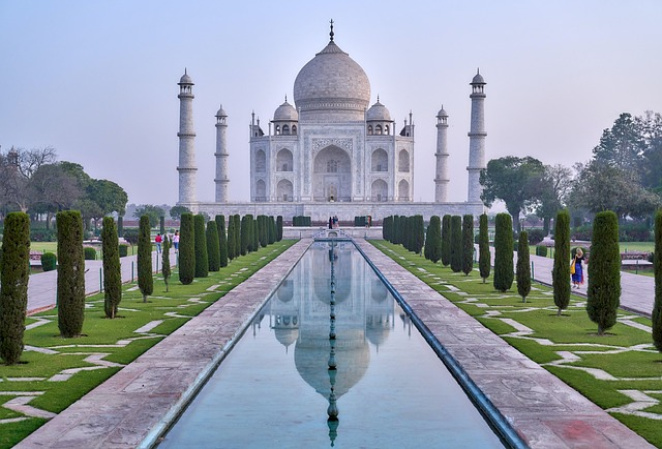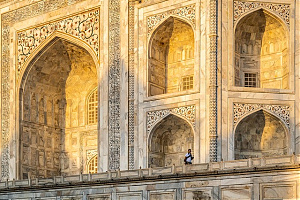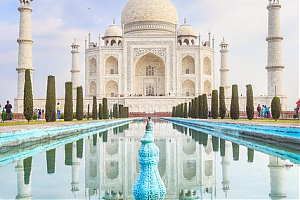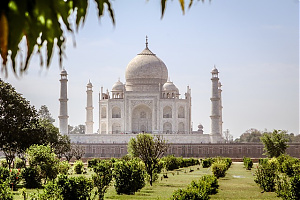Taj Mahal
On 2025-02-16 20:18:49
Taj Mahal - The Pearl of India
The Taj Mahal, the pearl of India, is a true architectural wonder, one of the most famous and impressive monuments in India, a UNESCO World Heritage Site, a monumental embodiment of the expression of love and memory. The perfect proportions of the building, the brilliance of the white marble, the harmony of the surrounding gardens all evoke feelings that are difficult to describe in words. Now, as I write about the history of the Taj Mahal, I pay heartfelt respect to this wonderful place, which has stood for more than 400 years. I have a great desire to walk there one day and feel the spiritual magic that surrounds this building.
Key Features:
Date of Construction: 1632–1653
Architectural Style: Mughal architecture, with Persian, Islamic, and Indian influences
Material: White marble, inlaid with precious stones
Main Building: A huge domed mausoleum surrounded by four minarets
Other Features: Beautiful gardens, water basins, and a mosque
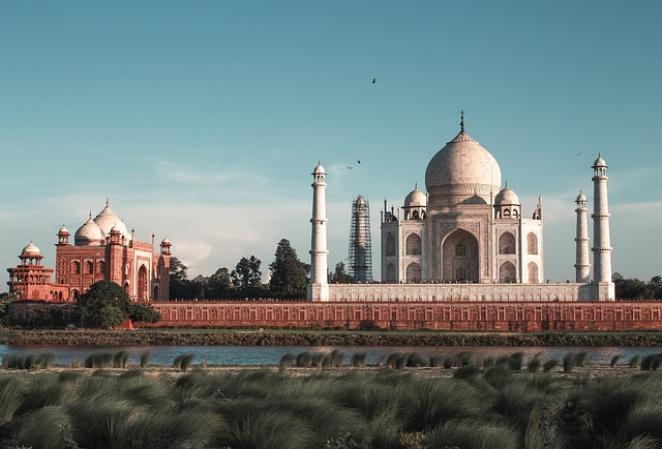
Famous for the changing colors of the marble building in the daytime and moonlight, as well as for its perfect symmetry.
Construction of the Taj Mahal began in 1632 and was completed by 1653, taking nearly 22 years to complete. The Mughal emperor Taj Mahal – An Iconic Monument of Eternal Love decided to build this mausoleum in Agra after the death of his beloved wife, Mumtaz Mahal. Mumtaz Mahal tragically died after giving birth to their child, which was a huge loss for the emperor. The intricate details and the grandeur of the structure were all built in her memory. Shah Jahan’s faith and love are also evident in the Taj Mahal; the highest level of craftsmanship and the finest materials were used during its construction. 20,000 workers from various regions, including Persia, Arabia, and India, worked together to build the structure.
The Taj Mahal is not just a mausoleum, but also a symbol of love and loyalty. Many believe that the true significance of this building lies not only in its aesthetic value, but also in the story behind it. When we see the entrance gate, the great dome, the ornate gardens – it seems that all this contains symbolism that speaks of immortality and love. Perhaps the most famous romantic legends convey this depth, as some say the Taj Mahal is one of the most beautiful love letters in the world.
Taj Mahal – An iconic monument of eternal love in Agra
Today, the Taj Mahal is a World Heritage Site and a symbol of religious and cultural heritage. Millions visit it every year to witness this monumental expression of love. Visitors not only admire the stunning beauty of the building, but also the story behind it. The reverence for the Taj Mahal is still alive today, and many couples make pilgrimages here to celebrate their love. The spirituality and appeal of the place captivates both young and older generations.
The surroundings of the Taj Mahal also contribute to the experience. The grounds are a complex of beautifully landscaped gardens, beautifully curved walkways and water features that accentuate the beauty of the building. The harmony of the Wasser-verre-sarl and the plasterboard decorations enhance the unforgettable atmosphere of the place. At sunset and sunrise, the color of the Taj Mahal constantly changes, and this beautiful phenomenon only deepens the magic of the place.
As I look at the Taj Mahal, even in a photograph, I feel as if it reminds me of the timeless power of love. Every stone, every detail, every smooth line reflects the emotions of the human heart and the depth of love. Standing in front of this beautiful structure, we can experience the meeting of traditions and heritage, the connection between the past and the present. The Taj Mahal is not just a building.
It is a monument that preserves love and memory and also sends this message to us.
